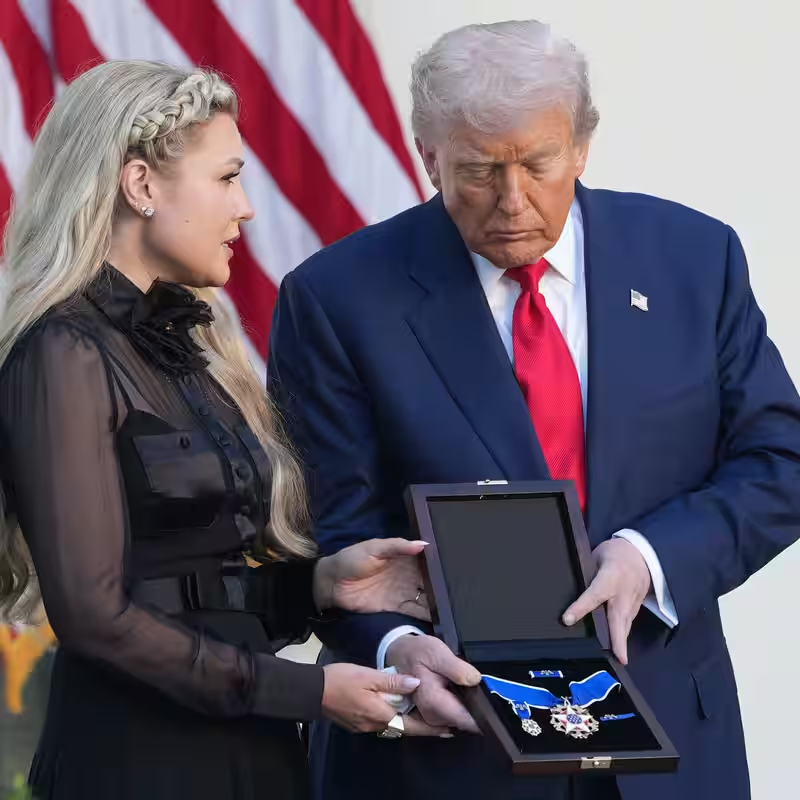Table of Contents
- The Rise of Charlie Kirk as a Far-Right Martyr
- From Oklahoma to Lima: A Global Symbol
- Three Key Ingredients of Modern Martyrdom
- Why Charlie Kirk Succeeded Where Others Didn’t
- The Political Power of Martyr Narratives
- Sources
What Makes a Martyr? The Charlie Kirk Phenomenon Begins
In the months since his death, Charlie Kirk has transformed from a conservative activist into a near-sacred figure for the global far right. His name is invoked at rallies from Madrid to London. Statues are being proposed. Highways may soon bear his name. And on what would have been his 32nd birthday—declared a “National Day of Remembrance” by an act of Congress—President Trump posthumously awarded him the Presidential Medal of Freedom.
But what makes someone like Charlie Kirk a martyr—and not just a casualty? Experts say martyrdom isn’t accidental. It’s engineered. And in today’s hyperconnected, ideologically fractured world, the right ingredients can turn a person into a lasting symbol almost overnight.

From U.S. Campuses to International Stages
Kirk’s influence now stretches far beyond American politics. In London, his name echoed through a major far-right gathering. In Madrid, conference panels were dedicated to his “legacy.” Even the mayor of Lima, Peru, held a public memorial, comparing Kirk to early Christian martyrs who “spread truth in hostile lands.”
Back home, state legislatures are racing to cement his memory. Oklahoma is weighing a bill that would require every public university to erect a statue of Kirk. Proposals to mint commemorative coins and rename highways are gaining traction in at least five states.
What Makes a Martyr? Three Key Ingredients
According to political sociologists and historians, effective martyrdom hinges on three elements:
- Clear Narrative: The martyr’s death must be framed as unjust, often at the hands of a defined enemy.
- Existing Platform: The person must already have visibility—followers, media presence, or institutional backing.
- Symbolic Utility: Their story must serve a larger cause, justifying action, unity, or even retaliation.
Charlie Kirk checks all three boxes. As founder of Turning Point USA, he had a massive platform. His death was quickly attributed—accurately or not—to ideological enemies. And his legacy is now being used to galvanize a movement that sees itself under siege.
Why Charlie Kirk Succeeded Where Ashli Babbitt Didn’t
Not all deaths become martyrdoms. Take Ashli Babbitt, the Capitol rioter shot during the January 6 insurrection. Despite efforts by right-wing media to elevate her as a martyr, her story never gained the same traction.
Why? Experts point to ambiguity. Babbitt lacked a pre-existing national profile. Her actions on January 6 were contested, even within conservative circles. And without a unified narrative or institutional push, her martyrdom fizzled.
By contrast, Kirk’s network moved swiftly. Within hours of his death, coordinated messaging framed him as a victim of political violence. Think tanks, podcasts, and social media influencers amplified the story—turning grief into a weaponized myth.
The Political Power of Martyr Narratives
Martyrs are more than symbols—they’re strategic assets. They simplify complex conflicts into moral binaries: good vs. evil, us vs. them. They inspire donations, recruit new followers, and justify increasingly hardline positions.
In Kirk’s case, his martyrdom has already reshaped campaign rhetoric, policy proposals, and even foreign policy discourse among far-right factions in multiple countries. As one European far-right leader put it: “Kirk didn’t just die—he ignited a fire.”
Whether that fire leads to renewal or ruin may depend less on facts—and more on who controls the story.




